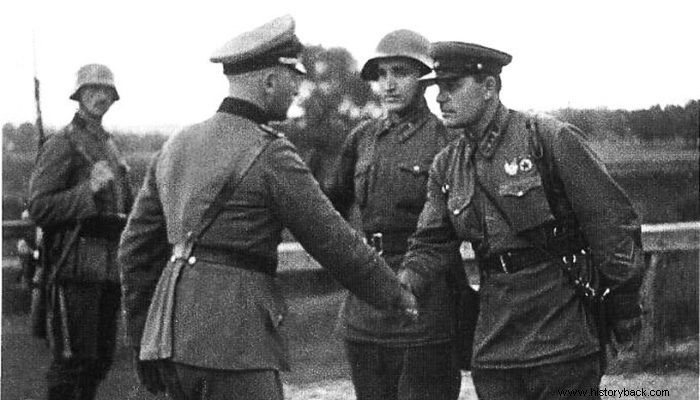
Initially it was a move of cynicism that brought benefits to both sides. In preparation for the attack on Poland, Hitler wanted to ensure the neutrality of the then Soviet Union and avoid the two-front war that led to World War I in Germany's defeat. It was under these conditions that Hitler and Stalin signed the Non-Aggression Pact 80 years ago on August 23rd. But the most important were not what was included in the official Pact, but the annex.
Unspeakable misery
It predicted that in the event of territorial readjustments all countries between the German Reich and the Soviet Union would be divided into spheres of influence. For example, Estonia, Latvia, the eastern part of Poland and Romanian Bessarabia would pass into the Soviet sphere of influence, while the western part of Poland into the German Reich.
On September 1, 1939, the Wehrmacht invaded Poland, marking the start of World War II. Two weeks later the Red Army invades in turn the east of Poland and slowly occupies all those areas that came under Soviet influence. The division of Eastern Europe as a whole was completed in the first two weeks of the start of World War II. German and Soviet military, intelligence and administration officials worked very closely together.
Poland disappeared from the political map for the second time. The Baltic countries, which, like Poland, had only gained their independence in World War I, became Soviet republics. Romanian Bessarabia was incorporated into the Ukrainian Soviet republic. "This is how Romania fell into the arms of Nazi Germany," says the Romanian historian Cozmin Popa.
For the residents on both sides of the dividing line, a period of unspeakable misery began. Hitler imposed his racist ideology on the conquered territories, ordered the killing of millions of people, while in the Soviet zone of influence large sections of the population were expelled, thousands of people of the old elite were killed or deported to forced labor camps.
The German-Soviet Non-Aggression Pact lasted almost two years. In June 1941, when half of Europe was now under the Nazi yoke, Hitler felt strong enough to attack his own ally by overestimating its own strength. But it was crucial. Because the following winter the course of history changed and Germany began to weaken militarily. For the peoples of conquered Europe, however, a few more years of complete impoverishment, displacement and killing had to pass.
The wounds remain
The trauma of German-Russian cooperation at a heavy cost to other countries is still visible to this day. In Poland the Hitler-Stalin Pact is considered to have led to the fourth partition of the country after the previous three in the 18th century, when Poland was divided between Russia, Prussia and Austria and disappeared from the map. In addition, the Soviet invasion caused the arrest of 22,000 Polish officers and policemen.
In the spring of 1940, the Soviet secret services took them to Katyn and two other areas and executed them with a bullet to the head. The Pact had effects even after the end of the war. Because the Soviet Union belonged to the victors of the war, the Western powers could not prevent the countries included in the annex of the Hitler-Stalin Pact from remaining in their sphere of influence.
But after World War II it fell into oblivion. In Eastern Europe during the Cold War it was treated as taboo, and in West Germany it played no part in the historical processing of the post-war period. But the wounds remained. In a letter to the Poles, President Putin described the deal as immoral, but that view quickly faded.
A few months after Russia's annexation of Crimea, Putin defended the Pact as necessary at the time. In today's Russia, Stalin has historically been rehabilitated, and in fact, in this year's poll, 70% of respondents answered positively about Stalin's role in the country. For these reasons, Poland and the Baltic countries fear that they could fall victim to politics.
For example, with regard to the Russian natural gas pipeline Nord Stream 2. "Historical analogies cannot be made today," argues historian Jörg Gnzenmüller, "the fear is exaggerated. Poland and the Baltic countries are closer to Germany than to Russia. It is proven by their participation in NATO and the EU".
The German historian observes, however, that German foreign policy pursues its own interests without taking these fears into account, so he recommends that the German government show more understanding when fears are expressed.
Source:DW
